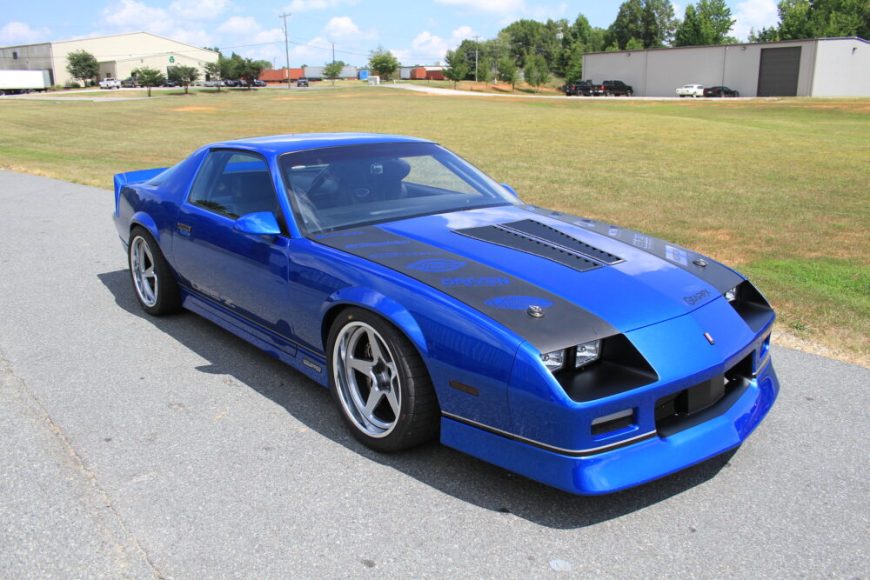Paint and Body Restoration: Addressing Common Third-Gen Chevy Camaro Rust Issues
The third-generation Chevrolet Camaro, produced from 1982 to 1992, remains a beloved classic among muscle car enthusiasts. Its aerodynamic styling, aggressive stance, and versatile platform make it a favorite for restorers and collectors alike. However, as with many vehicles from this era, rust and body deterioration present ongoing challenges. Properly addressing paint and body issues is crucial to preserving both the appearance and structural integrity of these classic Camaros. This guide explores common rust-prone areas, restoration strategies, and key upgrades—including the often-overlooked lighting system—that help bring a third-gen Camaro back to its former glory.

Common Rust Areas on Third-Gen Camaros
Rust tends to form in predictable areas on third-gen Camaros, particularly due to moisture accumulation and older factory paint technologies. Popular spots include the wheel wells, rocker panels, fender edges, rear quarter panels, and around door sills. The floor pans and trunk floor are also vulnerable, especially in vehicles exposed to road salt during winter months. Inspecting these areas thoroughly is essential before beginning any restoration project. Rust left untreated can compromise the car’s structural rigidity, making future repairs more complex and costly.
Paint Restoration Techniques
Once rust is addressed, restoring the paint is the next step. Sandblasting or media blasting is often used to remove surface rust, followed by cutting out severely damaged panels and welding in new sheet metal if necessary. After bodywork, applying a high-quality primer and multiple layers of paint ensures durability and an even finish. Modern urethane paints offer superior protection compared to the factory paints of the 1980s, helping prevent future rust formation. Clear coats not only enhance visual appeal but also create an extra barrier against moisture and UV damage.
Addressing Rust Under Trim and Accessories
Trim, emblems, and body accessories can trap moisture against the metal surface, accelerating corrosion. During restoration, removing all trim pieces and inspecting the underlying metal is crucial. Chrome bumpers, badges, and moldings can be cleaned, polished, or replated to restore their original shine. Reinstalling these components with proper seals and gaskets ensures that water does not penetrate and cause rust in hidden areas.
Lighting System Considerations
When restoring a third-gen Camaro, the lighting system often deserves attention alongside paint and bodywork. Headlight housings, taillight lenses, and signal light assemblies are prone to oxidation, fogging, and cracking over decades. Moisture intrusion can lead to corrosion of bulb sockets and wiring, compromising both functionality and safety. Upgrading to modern LED third gen Camaro headlights during the restoration not only enhances visibility but also reduces maintenance needs. Similarly, replacing old taillights with LED or refurbished units improves rear visibility and adds a contemporary touch that complements the car’s restored bodywork. Ensuring the lighting system is watertight and properly aligned also prevents further damage to surrounding panels.
Prevention and Maintenance
Restoring a Camaro’s body and paint is only half the battle—preventing future rust is equally important. Regular cleaning, particularly after exposure to road salt, helps remove corrosive elements. Applying wax or paint sealants creates a protective layer, while undercoating the vehicle can safeguard the floor pans and wheel wells. Routine inspections allow early detection of any new rust spots, minimizing the extent of future repairs.
Paint and body restoration on a third-gen Chevy Camaro is a labor of love that requires careful planning, patience, and attention to detail. Addressing common rust areas, upgrading paint and protective coatings, and maintaining trim and lighting systems ensures both visual appeal and long-term durability. For enthusiasts and collectors, investing in quality restoration techniques not only preserves the car’s iconic design but also protects its value for years to come. With the right approach, a third-gen Camaro can shine as brightly today as it did when it first rolled off the assembly line.